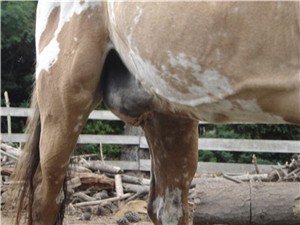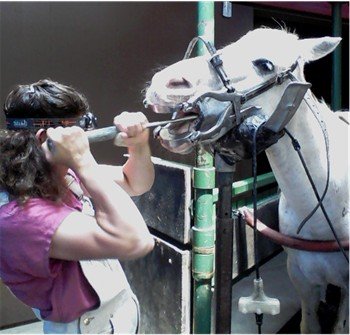Equine Worming Schedule
Get Your Free Printable Worming Chart
This equine worming schedule makes it easy to keep track of when your horse was wormed and what your horse was wormed with. Whether you have one horse or several, you’ll never miss a worming again with this handy horse worming chart.
Get your free printable Worming Schedule here.
A regular rotational worming schedule has proven to be the best defense against internal parasites in horses. Healthy horses should be wormed every 6-8 weeks (minimum of six times a year)
Pregnant mares should be wormed one month before foaling, and then wormed for intestinal thread worms after foaling to prevent the spread of worms via the milk. Foals can be started on a worming schedule at 4-6 weeks.

Caution: Pregnant mares and foals... Only use wormers that are labeled safe for foals and pregnant/lactating mares.
Horses with very heavy round worm infestations can die from impaction colic when too many dead worms are released into the gut at once. If you are dealing with unhealthy horses or horses heavily infested with parasites, consult your veterinarian for best worming practices.
Rather than read the brand of the equine wormer, read the active ingredient used to kill parasites.
Rotate the active ingredients used with each worming to prevent the horse parasites from developing a resistance to the wormers.
The 5 Active Ingredients in Equine Wormers
- Ivermectin - a broad spectrum wormer
- Fenbendazole - a broad spectrum wormer
- Oxibendazole - a broad spectrum wormer
- Praziquantal - for tape worms
- Pyrantel pamoate - a broad spectrum wormer

How to Use This Equine Worming Schedule
This single chart can be used for one or more horses. Simply check mark or write the name of your horse(s) under the corresponding month and active ingredient used for that worming cycle.
How you rotate the wormers does not matter as long as no one active ingredient is used repeatedly over the others.
Example: horses Buster and Flash have been wormed with Ivermectin in January and Fenbendazole in March.
|
Ivermectin |
Fenbendazole |
Oxibendazole |
Praziquantal |
Pyrantel pamoate | |
|
Jan Feb |
Buster & Flash | ||||
|
March April |
Buster & Flash |

Get your free printable Equine Worming Schedule here.

More Routine Health Care Articles:
Home > Horse Health Care > Worming Schedule


